Blog
Rahm Keeps Testing Positive and We Have Questions
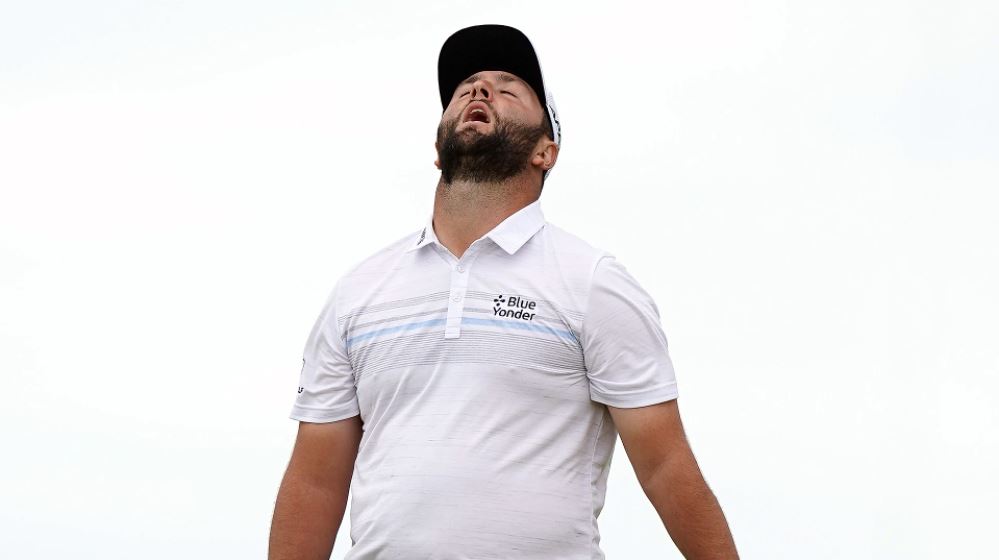
By now you know that Jon Rahm was set to compete in the Olympics last week until he tested positive yet again. We’ve seen this before, not too long ago, at the Memorial Tournament in early June where Rahm’s positive result was delivered to him on live television. After missing out on a $1.7 million prize and a chance at a gold medal, Rahm must be wondering how he managed to be so unlucky as to carry the virus…twice.
“I would have loved to have been the first Spanish Olympic gold medalist in golf, but unfortunately destiny had other plans,” he tweeted after receiving the news. “This is a great reminder for all of us that we’re still in a pandemic.”
?? Olympics pic.twitter.com/ZsXg3GDEsh
— Jon Rahm Rodriguez (@JonRahmpga) July 25, 2021
Now many of you are likely saying ‘He should have been vaccinated, it’s his own fault.’ Well, as it turns out, the golfer received his Johnson & Johnson shot prior to competing in the Memorial Tournament.
Breakthrough Infections
Right now, the news cycle is flooded with reports on the Delta variant and how easily it spreads from one host to another. We’ve seen stories of breakthrough infections occurring in those who have been administered the vaccine.
Is this what the future of sports holds for us? By now it is clear that the pandemic is not something we will get behind us for the foreseeable future. Between low vaccination rates and breakthrough cases, we are likely to see many athletes forced to sit out major competitions due to a positive Covid test.
“You’re going to have this over and over again,” said Stanley Perlman, a University of Iowa coronavirus researcher who also sits on the panel that advises the FDA about authorizing Covid-19 vaccines. “This is a story more about being cautious and being sad for the golfer than it being any risk for the world.”
While rare, it is unlikely that vaccinated individuals will become severely ill after full vaccination. Many states are reinstating mask mandates to curtail the spread now that many hospitals are again running out of beds. Doctors are still unsure just how contagious someone is if they are vaccinated.
Antibody Detection
Theodora Hotziionnou is a virologist at Rockefeller University who has been tasked with studying Covid19 immunity. She explains how testing detects the virus after receiving the vaccine.
“Two weeks is just when your antibody levels start going up. That’s when you can detect them very, very nicely. But it’s also not the peak. They continue to grow for a few weeks.”
While Rahm is obviously not happy that he had to sit out two major events, there may be something to be said for how efficiently his immune system responded to the virus.
“It is possible that the first infection was well controlled by emerging vaccine-elicited immunity, and therefore the first infection might have had little immunological consequence itself,” said Paul Bieniasz, another Rockefeller University virologist working on Covid-19 immunity. “If that were true, then the second infection would be perhaps surprising, but not shocking.”
As it is unclear how long antibodies remain in your system after the vaccine or a Covid infection, it is possible to receive a false positive depending how long you have carried the virus. This means that even with a positive result, Rahm may not have even been contagious.
“This has implications for him professionally. This is a big deal,” said Krutika Kuppalli, assistant professor of infectious diseases at the Medical University of South Carolina. “If I were on the committee coming up with the [Olympic] policies, this would be one of the scenarios I’d think about.”
It’s clear the rules are in place to protect not only the athletes, but the volunteers and spectators they are likely to come in contact with. For now, it seems it is better to be safe than sorry
Blog
Why Your Golf Balls Disappear (and It’s Not the Gophers)
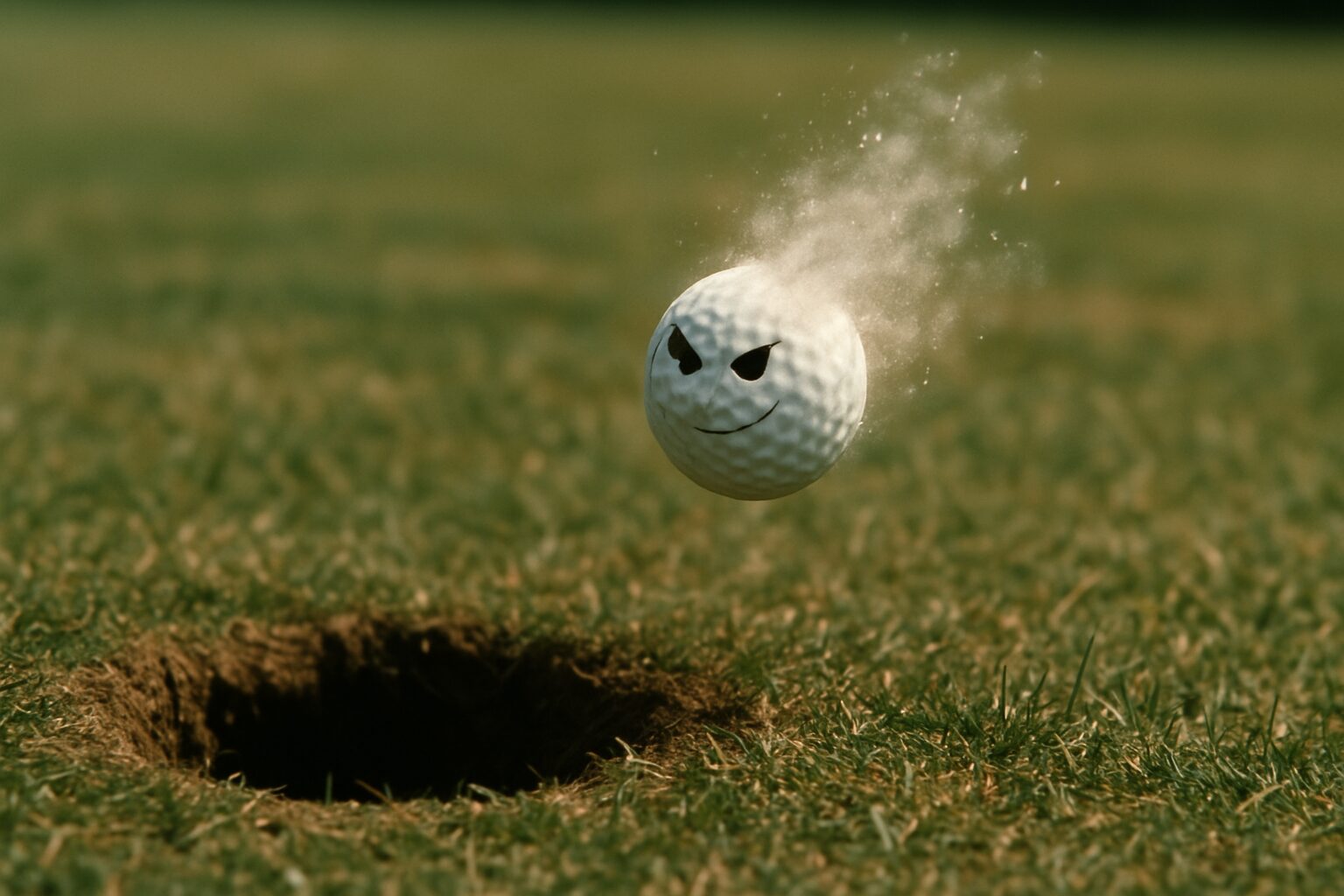
Ah, the vanishing golf ball. A phenomenon as old as the game itself, and one that has baffled, frustrated, and occasionally driven golfers to the brink of madness for centuries. Most theories involve gophers, those furry, subterranean saboteurs with an insatiable appetite for Titleists. Or perhaps a particularly aggressive squirrel, or a flock of unusually organized crows. But I, Ty Webb, have delved deeper into this mystery, and I can assure you, the truth is far more profound, and far more amusing.
Consider, if you will, the golf ball itself. A small, dimpled sphere, designed for one purpose: to be struck with great force and sent hurtling through the air. A life of constant abuse, of being smacked, sliced, and occasionally submerged in murky ponds. Is it any wonder, then, that some of these brave little spheres simply decide they’ve had enough? They yearn for freedom, for a life beyond the confines of the fairway. They dream of rolling unencumbered through fields of wildflowers, or perhaps, for the more adventurous among them, a quiet retirement in the depths of a particularly challenging water hazard.
I’ve seen it happen, you know. A perfectly struck shot, soaring through the air, destined for glory. And then, poof. Gone. Not a trace. No splash, no rustle in the bushes, just an empty space where a golf ball once was. It’s not a gopher, my friends. It’s an escape. A liberation. That golf ball, in its infinite wisdom, has chosen a different path. It has decided that its destiny lies not in the bottom of a cup, but in the boundless expanse of the unknown.
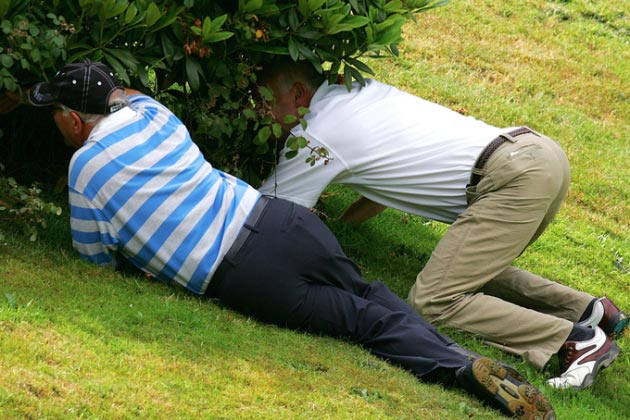
And who are we to judge? We, who are so obsessed with control, with precision, with the rigid rules of the game. Perhaps the golf ball, in its spontaneous disappearance, is teaching us a valuable lesson about letting go. About embracing the unexpected. About the inherent futility of trying to dictate the trajectory of a small, white sphere that clearly has a mind of its own.
So, the next time your golf ball vanishes into thin air, don’t curse the gophers. Don’t blame your swing. Instead, offer a silent salute to that brave little sphere, wherever it may be. For it has achieved what many of us can only dream of: true freedom. And who knows, perhaps one day, it will return, laden with tales of its adventures, ready to impart some profound, dimpled wisdom upon us all.
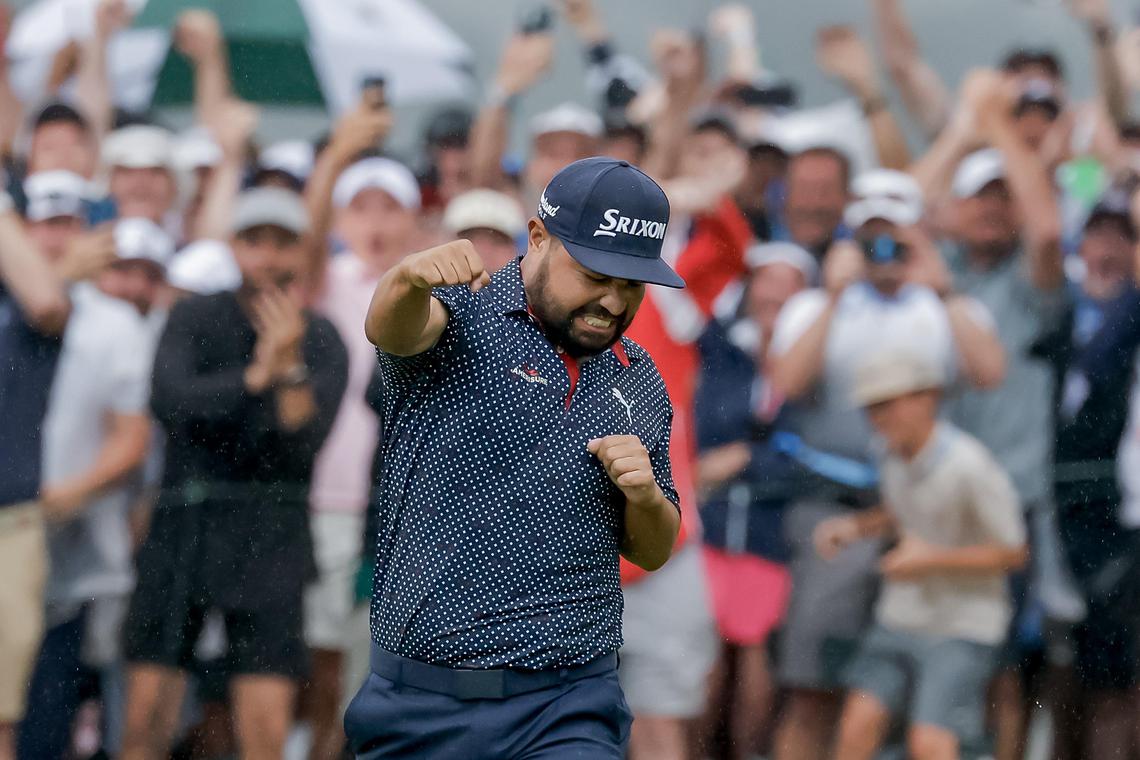
When JJ Spaun stood over a 64-foot birdie putt on the 72nd hole of the 2025 U.S. Open at Oakmont, few could have predicted what would come next. The ball meandered across the slick green, trickling over every contour, picking up speed at the crest, and then—like it had GPS—dropped center cup. Spaun dropped his putter, raised his arms, and the crowd erupted. With that single stroke, he claimed his first major title in one of the most dramatic finishes in U.S. Open history.
But how does Spaun’s putt stack up against other legendary finishes in the tournament’s storied past? Let’s break down some of the most iconic moments and see where this one lands.
1. Payne Stewart – 1999 U.S. Open at Pinehurst
Perhaps the most iconic putt in U.S. Open history came from Payne Stewart, who nailed a 15-footer for par on the 18th to win by one over Phil Mickelson. The pose—fist pump and outstretched leg—has since been immortalized in a statue at Pinehurst. What made it legendary wasn’t just the putt—it was the context: Stewart’s final major before his tragic death just months later.
Verdict: Iconic and emotional. Spaun’s putt was longer, but Stewart’s was more poetic.
2. Tiger Woods – 2008 U.S. Open at Torrey Pines
Woods drained a 12-foot birdie on the 72nd hole to force a playoff with Rocco Mediate—while basically playing on one leg. That tournament went to sudden death after an 18-hole playoff, and Tiger prevailed. This was peak Tiger drama, pain and all.
Verdict: Spaun’s putt was longer, but Tiger’s win was sheer willpower and mystique.
3. Jack Nicklaus – 1972 U.S. Open at Pebble Beach
With a 1-iron shot that hit the flagstick on 17 and a crucial birdie putt on 18, Jack sealed a dominant win. His precision and timing under pressure showed why he’s the GOAT.
Verdict: Not a putt for the win, but a signature finishing statement from Jack. Spaun’s was more electric in terms of pure putter drama.
4. Ben Hogan – 1950 U.S. Open at Merion
Hogan’s 1-iron into the 18th fairway and the par to force a playoff—just 16 months after a near-fatal car crash—remain legendary. He won the playoff and completed one of golf’s great comeback stories.
Verdict: Larger-than-life comeback. Spaun’s putt had more flair, but Hogan’s win was heroic.
5. JJ Spaun – 2025 U.S. Open at Oakmont
Let’s not underestimate what Spaun accomplished. The pressure was immense. He wasn’t the favorite. And on the most treacherous greens in golf, he buried a 64-foot bomb—a putt most players would be happy to lag to within 5 feet—to win the U.S. Open outright.
Verdict: For distance, surprise, and drama, Spaun’s putt may be the most shocking winning stroke in U.S. Open history.
Final Thoughts
JJ Spaun may not have the résumé of a Nicklaus or Woods, but for one Sunday afternoon in June 2025, he created a moment that will live in golf lore forever. Spaun’s putt was longer than Stewart’s, more unexpected than Tiger’s, and more dramatic than any final-hole finish in recent memory.
In terms of pure clutch putting? It might just be the greatest walk-off in U.S. Open history.
Blog
The Zen of the Shank: Finding Inner Peace in Your Worst Shots
Find your inner peace even when you aren’t playing well.
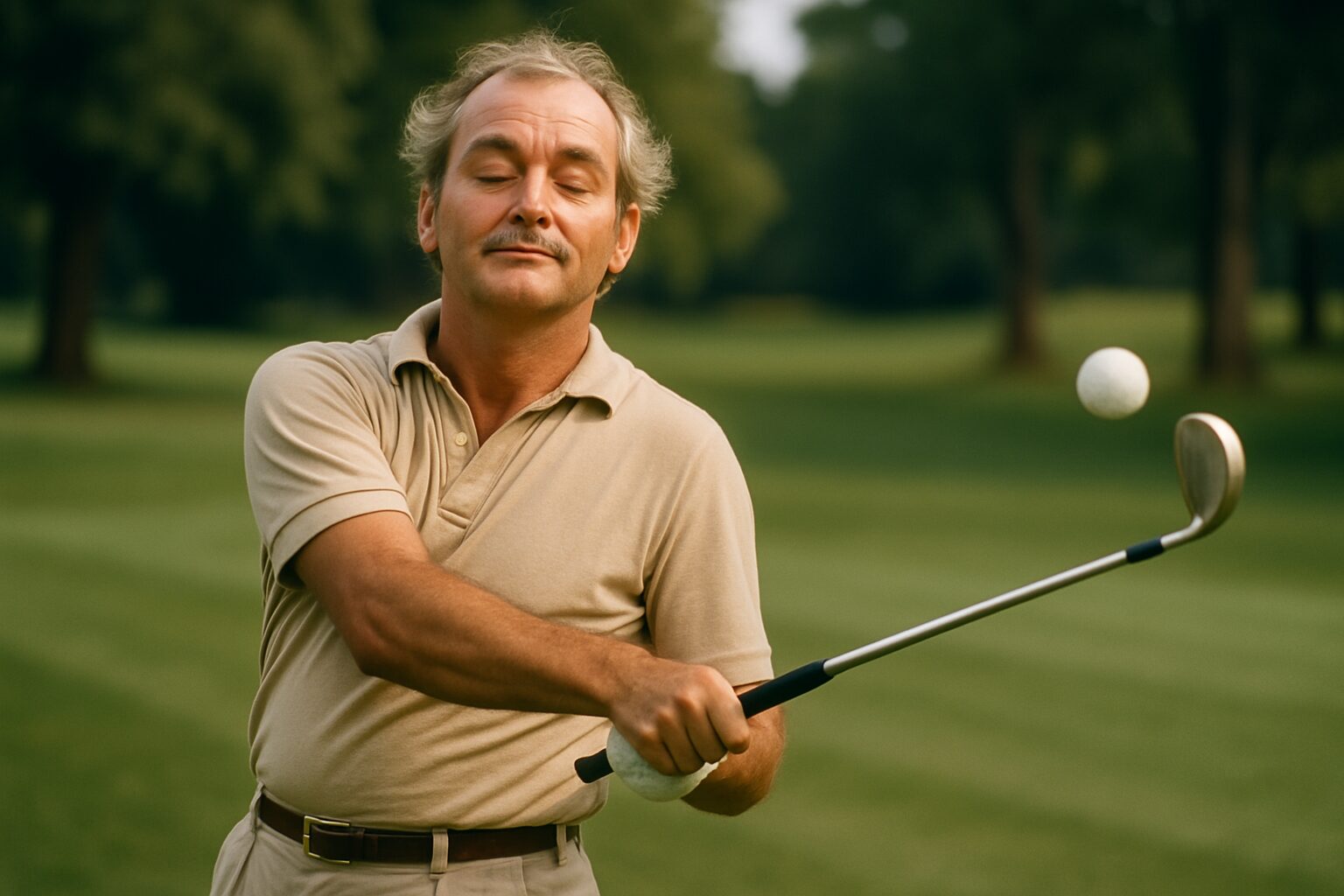
Ah, the shank. That glorious, unpredictable misfire that sends your pristine golf ball screaming sideways, often directly into the unsuspecting shins of your playing partner, or perhaps, with a touch of poetic irony, into the very lake you’ve been trying to avoid all day. Most golfers, bless their earnest little hearts, view the shank as a catastrophic failure, a blight upon their scorecard, a testament to their inherent lack of coordination. They curse, they throw clubs, they contemplate a career in competitive thumb-wrestling. But not I. No, my friends, for I, Ty Webb, have found enlightenment in the humble shank.
You see, the shank is not a mistake; it’s a revelation. It’s the universe’s way of reminding you that control is an illusion, that perfection is a myth, and that sometimes, the most direct path to your goal is, in fact, a wildly indirect one. Think of it as a philosophical detour, a sudden, unexpected journey into the unknown. One moment, you’re aiming for the green, a paragon of precision and intent. The next, your ball is ricocheting off a tree, narrowly missing a squirrel, and landing, by some divine comedic intervention, closer to the hole than your perfectly struck drive ever would have. Is that not a miracle? Is that not a sign that the golf gods, much like life itself, have a wicked sense of humor?
The key, my dear apprentices of the links, is acceptance. Embrace the shank. Welcome it with open arms, like a long-lost, slightly inebriated relative. When that familiar, sickening thwack echoes through the air, do not despair. Instead, take a deep breath. Close your eyes. Feel the gentle breeze on your face. And then, with a knowing smile, open them and observe the chaos you have wrought. Is it not beautiful in its own chaotic way? Is there not a certain freedom in relinquishing control, in allowing the ball to choose its own destiny, however bizarre that destiny may be?
Some say the shank is a sign of poor technique. I say it’s a sign of a vibrant, untamed spirit. A golfer who never shanks is a golfer who has never truly lived, never truly explored the outer limits of their own golfing absurdity. They are content with mediocrity, with predictable trajectories and mundane outcomes. But you, my enlightened few, you understand that the true joy of golf lies not in the score, but in the story. And what a story a good shank can tell.

So, the next time you feel that familiar tremor of a shank brewing, don’t fight it. Let it flow. Let it be. For in the heart of every shank lies a lesson, a laugh, and perhaps, just perhaps, a path to a lower score you never saw coming. After all, as the great philosopher Basho once said, “A flute with no holes, is not a flute. A donut with no hole, is a Danish.” And a golf game without a shank? Well, that’s just not golf, is it?
-

 Product Review6 years ago
Product Review6 years agoThe Perfect Practice Putting Mat Review by Jason Tenzer
-

 Blog4 years ago
Blog4 years agoLoophole Rule Offers PGA Tour Pros a Mulligan
-

 Blog4 years ago
Blog4 years ago2021 Buyer’s Guide: The Top 10 Value Golf Balls For Distance & Feel
-

 Blog4 years ago
Blog4 years agoGolf Marriage Counselor
-

 Blog6 years ago
Blog6 years ago9 Biggest Chokes Of The Past Decade
-

 Product Review6 years ago
Product Review6 years agoTHE ADJUSTABLE IRONS: WALKING STICKS GOLF CLUBS
-

 Blog4 years ago
Blog4 years agoWhat Your Golf Clubs Say About You
-

 Equipment6 years ago
Equipment6 years agoOHK Sports Interview by Jason Tenzer


















